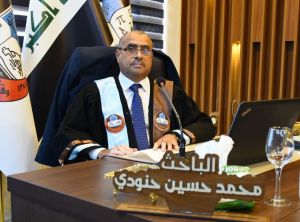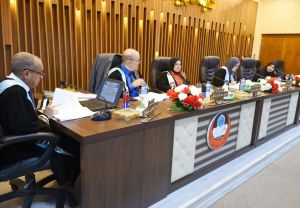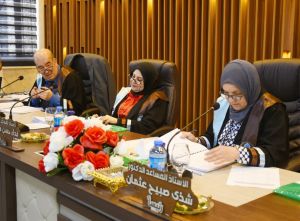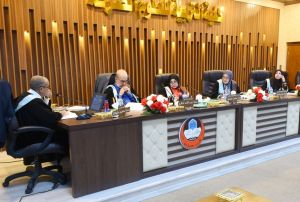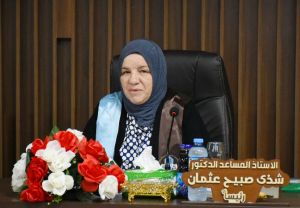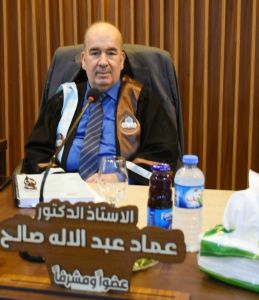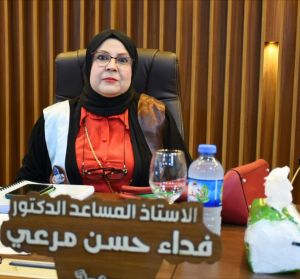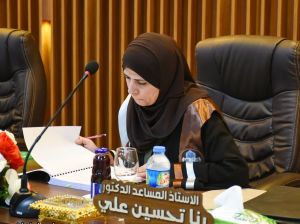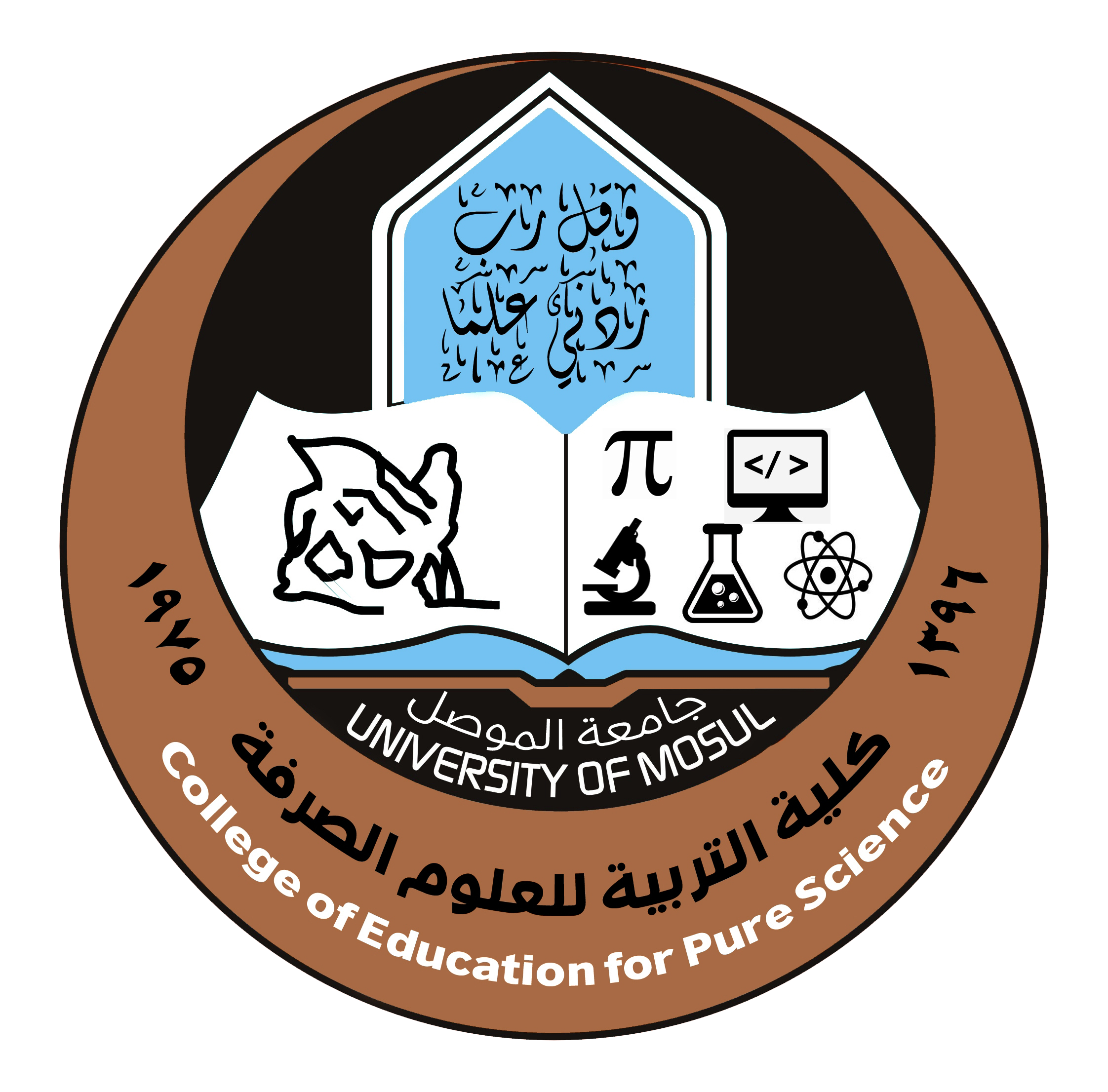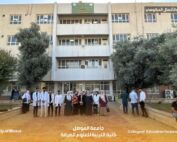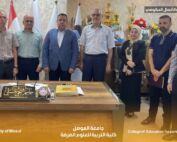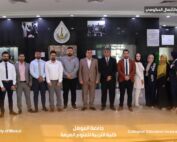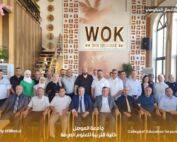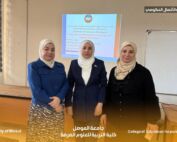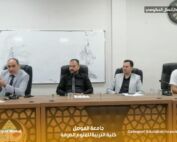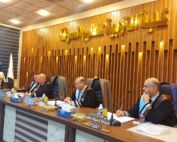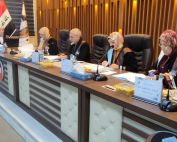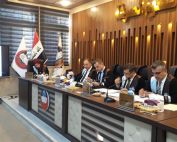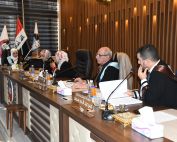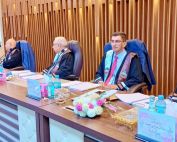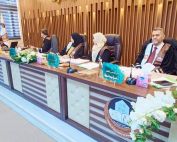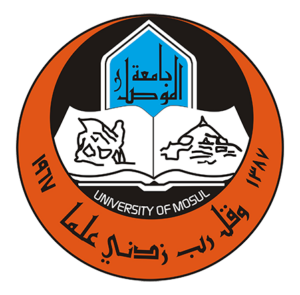3 September، 2023
Master Thesis Viva _Chemistry Department

Master thesis Viva in the College of Education for Pure Science entitled ” Equilibrium and thermodynamic studies of Adsorption for a number of azo dyes on activated carbon prepared from fallen pine leaves of AL-Sonober trees in forests of the Mosul City ”
The College of Education for Pure Science, University of Mosul, has done the Master thesis Viva entitled ” Equilibrium and thermodynamic studies of Adsorption for a number of azo dyes on activated carbon prepared from fallen pine leaves of AL-Sonober trees in forests of the Mosul City “,
On Sunday, September 3, 2023, the College staff including the respected Dean of the College, Assistant Professor Dr. Qais Ismail Ibrahim, the Honorable Scientific Associate and Administrative Associate, the Honorable Head of the Department of Chemistry, and a number of the college’s teachers were attended the viva.
This study, presented by the master student Muhammad H. H. Al-Rashdy in the Department of Chemistry, included the preparation of a type of activated carbon from fallen leaves of eucalyptus trees in the forests of the city of Mosul, which was identified using (FTIR, BET, SEM, EDX, XRD) techniques. This carbon was applied to the process of removing four di-azo dyes that were prepared in our laboratories from the reaction of para- and meta-phenylene di-amine as a central part of the di-azo dye, then attached to the two sides with two molecules (resorcinol) or meta-aminophenol.
This study aimed to test the effect of the linearity of the dye structure on the adsorption efficiency. The spectrophotometric method was chosen to estimate the adsorption efficiency by making a calibration curve for each dye at its (λmax) value for each dye.
Optimal conditions for adsorption were studied, such as the effect of the amount of adsorbent (dose), the effect of the initial concentration of the dye, contact time and the effect of temperature. The study showed that the best quantity of prepared carbon used is (20gm/L) in a range of initial concentration that ranged between (35-192mg/l) and at a range of temperatures ranging between (293-333k°). The study showed that The best time for equilibrium ranged between (70-80) minutes, and for this reason, the time (80) minutes was chosen to test the subsequent studies.
Eight different isotherm equations were applied to the practical results of adsorption: Freundlich isotherm, Langmuir, Dubinin-Radushkevich (D-R) isotherm, Tempkin isotherm, Halsey isotherm, Harkins-Jura (H-J) isotherm, Flory-Huggins (F-H) isotherm and Fowler-Guggenhein (F-G). The results showed that application of the eight isotherms on the practical data of adsorption gave linear relations when only applied on Freundlich and Helsey isotherms. That means they are applicable to the experimental results of the adsorption system under study (R2 =0.9999 to 0.959), which confirms that adsorption mostly takes place in the form of several layers and on a porous surface of heterogeneous energy, and this is consistent with Identification of carbon prepared by (SEM, XRD) technology.
The research also included a thermodynamic study. The thermodynamic functions ∆So , ∆H , ∆Go were calculated at one concentration and at several temperatures
The Viva committee was chaired by Asst. Prof. Dr. Shatha Sabeeh Othman / Northern Technical University/Engineering Technical College of Mosul and the membership of Asst. Prof. Dr. Fedaa Hasan Merie Altaiea / University of Mosul / College of Education for Pure Science, Asst. Prof. Dr. Rana Tahseen Ali Hussain / University of Mosul / College of Education for Girls, and under the supervision and membership of Prof. Dr. Emad A. S. AL-Hyali / University of Mosul / College of Education for Pure Science.
